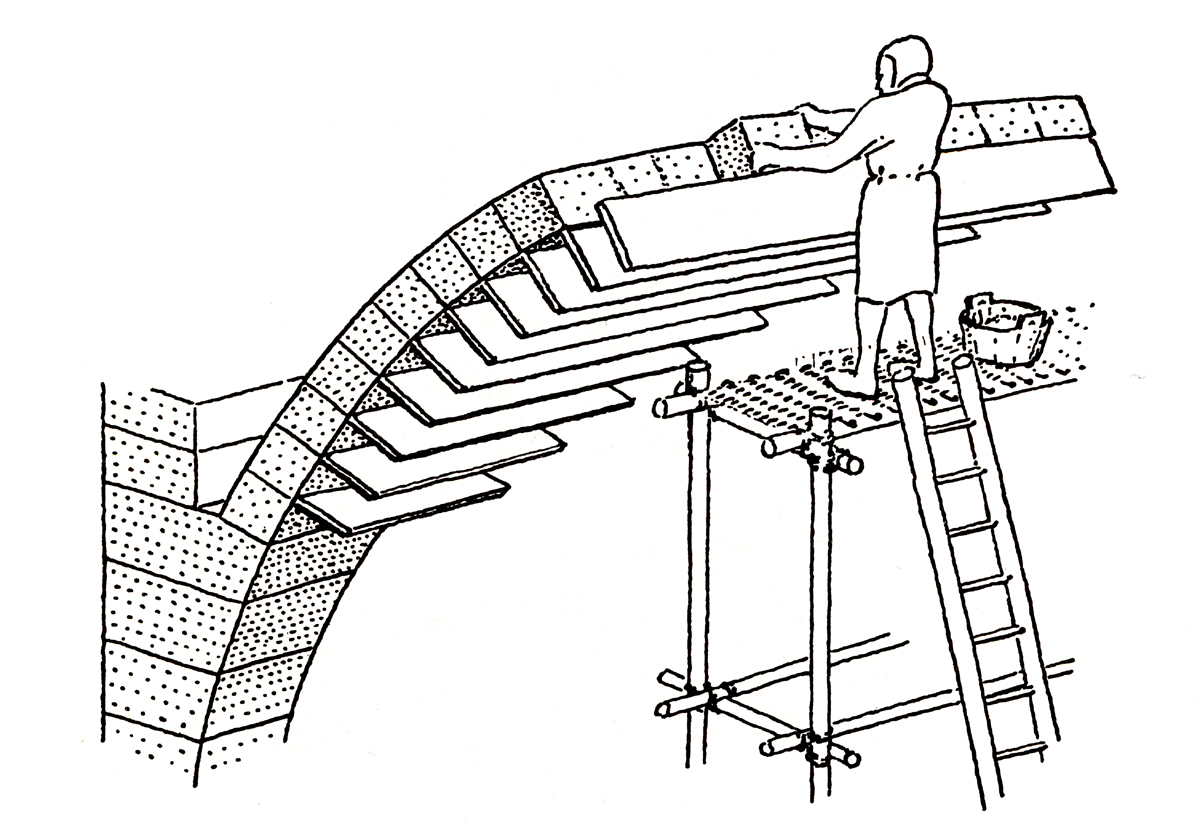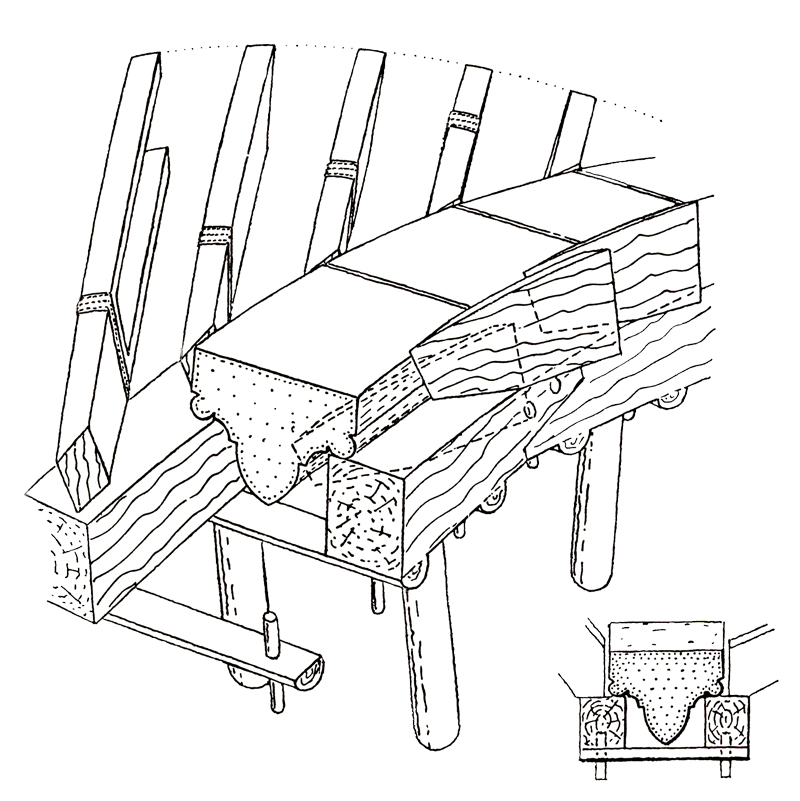Page 6
Cross Vault Webs
The choice of the transverse arches, which define the cylindrical surfaces for the cross vault, results in varied intersection curve profiles. This is part of the dichotomy when circles are chosen for some of the arches. The simplest choice is indeed to make round the intersecting arches (groin profiles), a choice that mandates elliptical transverse arches(see Fig. 11, pg. 3). As a result, the webs must have an elliptical cross section.
The webs in the four sections of the cross vault are erected as elliptical barrels, starting construction on the back of the diagonal stone arch bands (groins) that serve as foundations.
To define the web surface from spring to crown, the medieval builders used a simple expedient; they used transverse arch bands to set the remaining boundary of the web cylindrical surface, with the initial boundary already in place, that being the diagonal arch bands (see Fig. 13, pg. 5). The cylindrical web surface is defined by horizontal straight lines joining the diagonal arch bands to the transverse arch bands, much like a grid shell.
The last challenge in the web construction is the elliptical form for the transverse arches, a shape difficult to define and deal with, especially in consideration of the more limited medieval capabilities. The solution is to replace the elliptical shape with a close approximation made of two circular arches that intersect at the apex of the ellipse, figure 14. The rounded crown of the elliptical transverse arch is replaced by the characteristic pointed crown that is the iconic shape of a Gothic arch.

Fig 14. Elliptical arch approximated by two intersecting round arch sections.
Medieval builders found simpler and easier to use two intersecting round arches to define and cut the transverse arch bands. They achieved various ogive profiles by the proper selection of the center location and radius for the arch sections. These arch sections were drawn in a mirror-like geometry with the center for the circular sections typically located on the spring line.
Having built the groin and transverse arch bands first, the shape of the vault web is formed derivatively in each of the four wings (partitions) of a square cross vault. The vaults shape is never defined, but is imagined and built in a blind process by joining the extrados of established diagonal and transverse arch bands. The vault web requires no design or planning in this construction approach.
To simplify things further, there are only round arch bands to design and build, following this approach. It is a simpler and practical construction process. The Gothic shape of the vaults and the transverse arches is foremost a technological necessity, although it is normally recognized as a stylistic feature.
The horizontal lines that define the vault cylindrical shape are replaced in actual construction by support planks set on edge for strength and running horizontally from the diagonal arch bands to the transverse arch bands, figure 15.

Figure 15. Rendition of horizontal support planks for the web construction – Fitchen (1961, p. 140).
The planks rest on appositively arranged shelves on the centering timberwork that support the arch bands.
This set up is repeated in each of the four partitions of the cross vault. The vault is built by setting courses of wedge-shaped masonry, mortared in place starting at the spring line and rising to the crown line.
The planks serve to support the vault masonry in place during the vault construction. When the vault construction is completed, the planks are removed together with the rest of the formworks.
Fitchen shows a formwork, figure 16, used for the centering and bracing of groin arch bands that included shelve support for the horizontal planks.

Figure 16. Example of formworks used for the centering of groin arch bands and the support of planks for the vault - Fitchen (1961, chap. 4).

